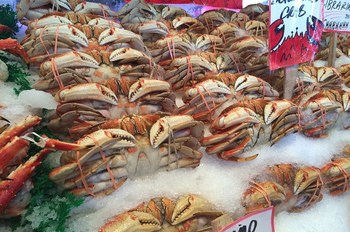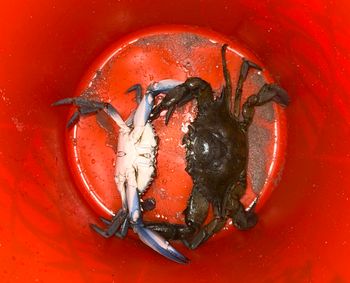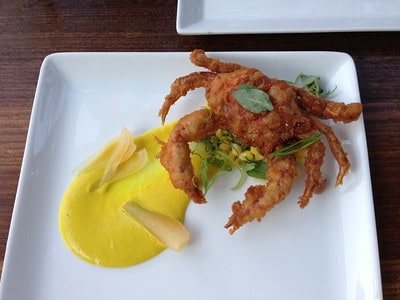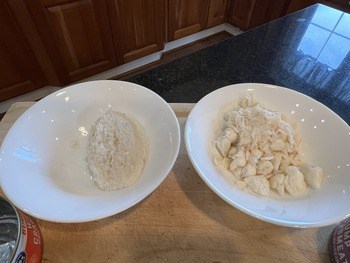All of Your Canned Crab Cooking Questions Answered!
As someone who owns a website about crabs, I was embarrassed at the fact that I’ve never opened a canned of crab meat in my life. I’m from Maryland, and I never had a reason to buy canned crab when I could buy them fresh or catch them myself. So, I went and bought six cans of crab meat to use in a few recipes.
On the first try, I wrote down every question I had. Then, I poured hours of research into each one and found a solid answer. I tried it myself and took pictures. Then, I put all of this together into the article you’re reading now. So, get ready to have your crab cooking questions answered!
Do you drain canned crab meat?
Seafood, especially crab, is notorious for easily going bad.
Seafood packagers preserve crab meat by packaging it in a brine solution. This is a water with a very high salt content, which helps prevent bacteria from ruining your crab meat. It’s safe to eat, but it’s very high in salt and can make your crab dish watery. I recommend draining canned crab meat.

One thing to keep in mind when draining crab meat is that white crab meat is smaller and flakier, and will easily slip away with the unwanted liquid. Use a strainer when draining this type of canned crab meat. Lump crab, on the other hand, has bigger and firmer chunks of crab meat from the claws. These stay together as one delicious chunk of crab meat.
Do you rinse canned crab meat?
People say that rinsing crab meat will ruin the flavor. So, I put it to the test. I know from my crabbing experience that cold water firms up crab meat. So, I placed a bowl of ice under my sink faucet and rinsed lump and white crab meat in a strainer while swishing it in ice water. At the end, my crab meat kept its signature blue crab taste, and I felt better about the meat I was eating.
The crab left a cloudy white color in the bowl of water that looked similar to the brine that I drained from the crab. While I have no data to back up why, I felt a lot better about eating this crab meat after this easy 3-minute process. I can confidently recommend rinsing your crab meat for clean and firm crab that doesn’t lose its taste.

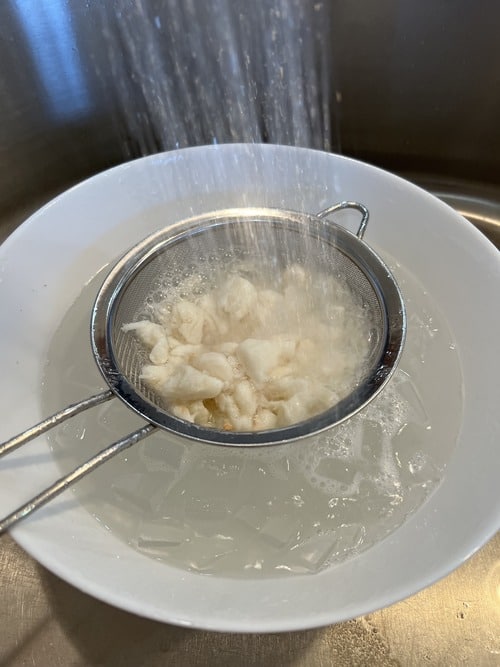
From the images above, you can get an idea of how each meat looks while being rinsed. I’ll admit I was worried that the white meat would dissolve through the strainer. Be sure to use fine mesh while straining white meat. It turned out fine, though. The image below shows the results. The white meat is on the left, and the lump crab meat is on the right,
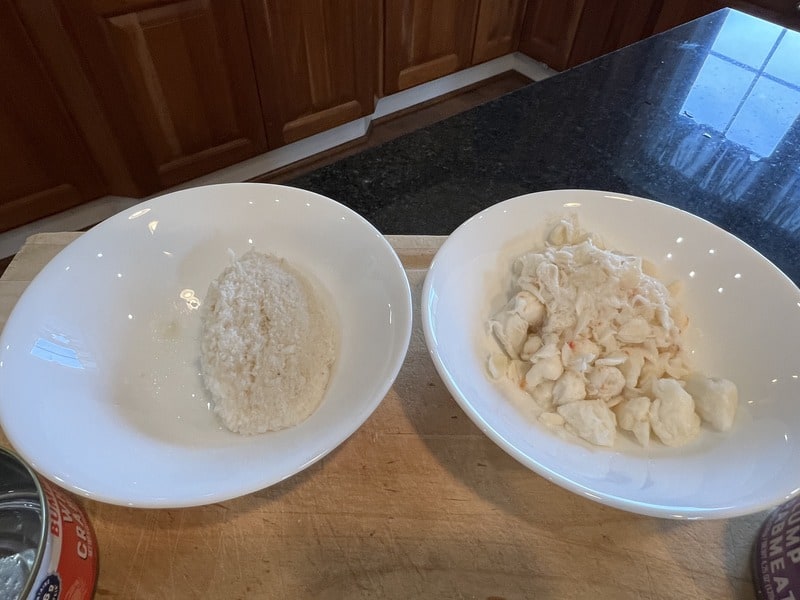
Can you eat it raw?
Like canned tuna and chicken, canned crab meat comes pre-cooked. The crabs are caught, cooked, picked of their meat, then packaged. This applies to all canned crab brands because crab meat has to be cooked in order for it to be firm enough to remove from the shell. Raw crab meat is half the size and has a gelatin consistency, which is unrecognizable to the crab meat we’re all used to.
I snuck a few chunks of lump crab meat while preparing this article. If you plan on eating crab meat out of the can, I recommend lump crab meat over white crab meat. It’s made up of tasty crab chunks from the legs that are better finger foods than the white meat canned crab. It’s like choosing between a seasoned meatball and plain ground beef.

Lump crab comes in these bite-sized chunks (image above). The meat’s pre-cooked and completely safe to eat, assuming there’s no clear sign of decay or that the meat’s gone bad. It tastes great too!
Canned crab meat may contain shells!
I’ve heard of a few unlucky people finding shells in their canned crab meat. I know that while picking crab by hand, it’s easy to end up with a few shells in your crab meat. I initially thought I’d manually pick through and find any shells, but I heard of a genius idea from Christine, a Maryland local:
To remove crab shells from your crab meat, preheat your oven to 450 F and place your crab meat on a baking tray. Stick your crab meat directly under the oven’s broiler for three minutes. Any shells in the meat will turn red and can be easily picked out.
I took her idea and built on it. I lined my baking sheet with aluminum foil to avoid cleanup. I also pushed the limit on how long I could keep the crab meat in the oven without drying it out. I found that after three minutes, any shell bits will turn red and your crab meat will not dry out.
After running this experiment, I found very little shells in my crab meat. There were more shells in the canned white crab meat than the lump crab meat. They were hardly noticeable, but present in the baking sheet by turning slightly red.
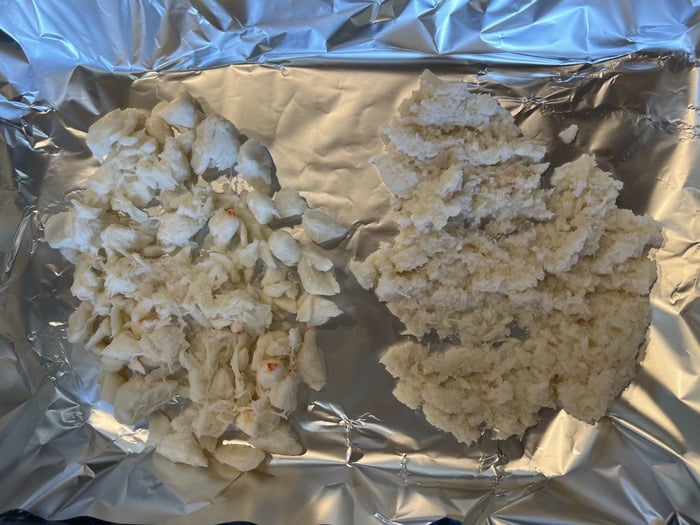

Above is the meat before it was placed in the oven, and below is a few shells I found after placing it in the oven. I circled them in green.
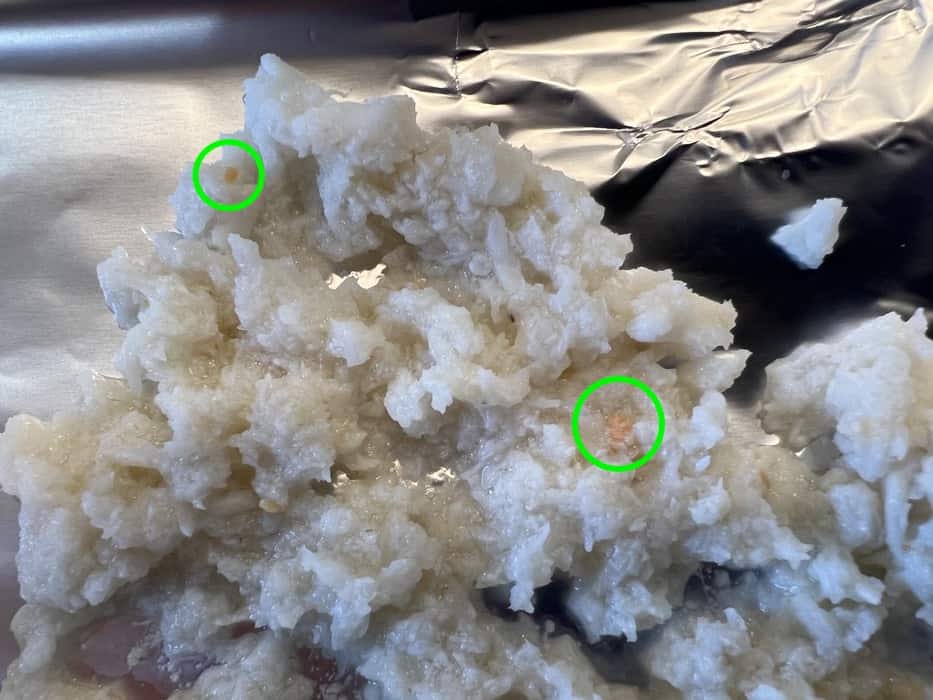
Canned crab meat has a paper lining.
One thing I didn’t know about canned crab meat is that the inside is lined with paper lining. Be careful when removing this, you don’t want small rips or tears to lead to paper in your crab.

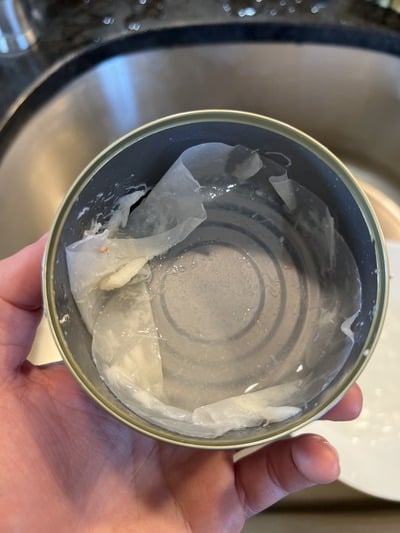
Preserve your crab for months.
Canned crab is much easier to store than any crabs you catch or buy fresh. As long as it’s in an unopened. can, it can stay in your pantry unrefrigerated until the can’s expiration date.
Once you open canned crab, it needs to be refrigerated in an air-tight container. This crab will last up to four days or until there’s clear signs of decay such as discoloration, mold, or bad smells.
Opened canned crab can last up to three months in the freezer in an air-tight container. If you take it out to defrost the crab, do not bother re-freezing it. This will ruin the taste and texture of the crab. To properly defrost frozen canned crab, place the container in the refrigerator overnight for a gradual increase in temperature. This will keep the texture and taste in tact for your crab dish.
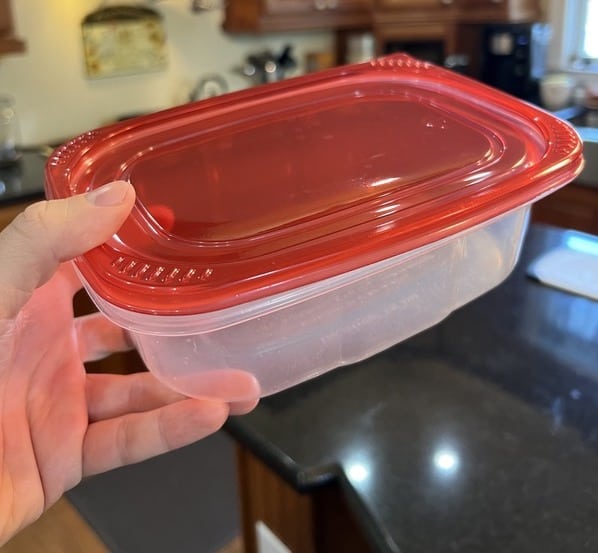
I use this plastic airtight container. I did some digging and found a bunch of plastic containers that are dirt cheap on Amazon.com from a listing most people don’t know about (Affiliate Link).
I would not recommend freezing your crab meat. Either if it’s from a can or fresh, it’s best to eat the meat as soon as possible. A Study from the Journal of Food Protection found that crab meat that was frozen in a conventional freezer for a long period of time “significantly reduce the quality, aroma, flavor, texture, and appearance of crab meat.”

